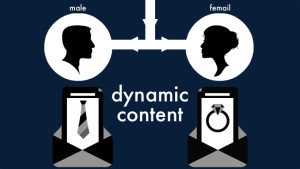You may recall the astonishing research shared by the Conference Executive Board a few years ago that revealed that in the world of B2B (business-to-business), over 60% of the sales decision-making process is done before the sale is made. Whether you agree with the statistic or not, it sparked an increased focus on the importance of understanding the customer buying journey, which has become a pivotal capability for every organization. How do customers discover your business?
The first step for prospective customers often entails putting keywords in a search engine, which means your organization should focus not on awareness, but rather discoverability. Here’s why. Discoverability is about being easy to find. Awareness, from a business perspective, is about knowing something exists. The world of search makes it possible for us find something even if we don’t know that it exists, which is why discoverability prevails over awareness.
What are the implications to Marketing if discoverability is the starting point? While we strongly believe that it is Marketing’s job to create a buying climate and craft customer-centric, data-driven strategies that find, keep, and grow the value of customers, it is critical for Marketing to make your organization findable.
It’s All About the Ease
Let’s look at it from the customer’s perspective. A buyer or group of buyers, no matter what the purchase, starts with the need to solve a problem or take advantage of an opportunity. In either instance, the buyer moves into investigative mode, in which they learn about the problem or opportunity and how others are tackling it. They reach out to their internal and external networks and conduct searches and scour websites. When it comes to investigation, search is a critical step. As we write this post, Google is processing over 40,000 search queries every second on average, which translates to over 3.5 billion searches per day and 1.2 trillion searches per year worldwide. It is during this process you must be discoverable and findable.
If discoverability is about being found, findability is about the ease with which the information you’re looking for can be found. The term findability was coined by Heather Lutze. In an article by Alkis Papadopoullos in 2005 the term evolved to encompass aspects of information architecture, user interface design, accessibility, and search engine optimization (SEO) that enable an organization to be easily found. This explains why so many organizations are intensely dedicated SEO.
Being discoverable takes more than optimizing your website. Every platform from your company – from LinkedIn, Twitter, and other social platform pages to the content shared via third parties – contributes to discoverability. Yes, your key word strategy is important for discoverability, but it is not enough. Links and metadata impact your discoverability as do usage and mentions. Therefore, to improve your discoverability, you need a data management strategy for defining and using data to improve your discoverability.
How to Determine Your Discoverability
As you begin to ask which is the data that will increase your organization’s discoverability, it’s important to answer these 5 questions:
- How discoverable is your organization today?
- How does your discoverability compare to your competitive set?
- What can you do to increase your discoverability?
- How will you measure discoverability?
- Where does awareness currently fit in terms of our priorities?
Being discoverable is just the first step to supporting the customer journey. As customers move from the investigative stage to the identification and evaluation stages and ultimately to decision and purchase, you will need to understand the content, touchpoints, and channels that are most desirable at each point. We believe it is imperative that you engage prospective customers by the time they move into the identification stage if you want to make it into the consideration set, as that is when prospective customers decide if they want to learn more about your approach and whether to engage or not.
Achieving organic growth depends on your ability to improve your discoverability and drive early engagement. Know your target audience, do your homework, use the data judiciously, and create a clear path between the customer and your organization. Do you have the answers to the questions above?
Business & Finance Articles on Business 2 Community
(34)


